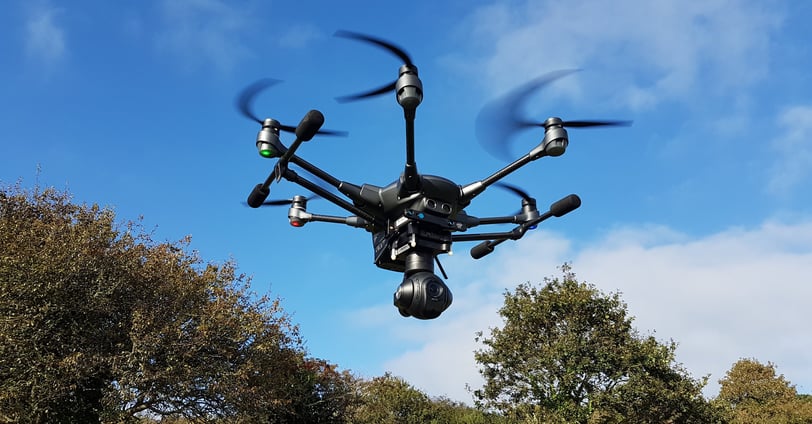Tech Industry Under the New Trump Administration: What’s at Stake?
One significant area of concern involves intellectual property rights. With many American firms citing theft or misuse of proprietary technologies by foreign entities, the new administration may impose stricter regulations to protect domestic innovations.
TECH INSIGHTS
Tommy James
1/20/20255 min read


Overview of Current Tech News Landscape
In recent months, the technology sector has witnessed a multitude of significant developments that highlight ongoing trends and innovations. One of the most prominent areas is artificial intelligence (AI), where advancements are occurring at an unprecedented pace. Companies are investing heavily in AI to enhance their products and services, with applications ranging from virtual assistants to autonomous vehicles. The rise of generative AI technologies has further captured public attention, prompting debates about ethical implications and the future of work.
Alongside these innovations, cybersecurity continues to be a critical focus area. With an increase in remote working patterns and a burgeoning reliance on digital infrastructure, organizations are increasingly exposed to cyber threats. Recent legislation, aimed at strengthening data protection and promoting cybersecurity best practices, has emerged as a necessary response. The implementation of stricter compliance measures is reshaping how companies operate, ensuring that they remain vigilant against potential attacks while protecting consumer data.
The evolving political landscape also influences these technological advancements. As the new Trump administration navigates challenges surrounding tech regulation, debates about antitrust laws and data privacy remain front and center. The decisions made by policymakers will undoubtedly impact various sectors within the technology industry, particularly those that dominate social media and e-commerce platforms. The administration's approach to these key issues could significantly dictate how technology companies innovate and structure their operations moving forward.
As such, understanding the recent developments in the tech landscape is essential for stakeholders. The intersection of innovations, cybersecurity challenges, and regulatory shifts forms a complex backdrop that shapes the future trajectory of the technology sector. Monitoring these trends will not only inform investment strategies but also provide insights into how businesses can adapt to an ever-changing environment.
Impacts of the Trump Administration's Tech Policies
The Trump administration's historical approach to technology reflects a pivotal moment for the tech industry, marked by significant regulatory decisions and initiatives that have shaped the landscape of innovation, data management, and international trade. One prominent aspect of this administration's tech policies was its stance on data privacy. The administration favored a less restrictive regulatory environment, which potentially facilitated business operations for tech giants but raised concerns regarding user data protection. Critics argued that these lax regulations might compromise consumer privacy, leading to debates over the balance between free enterprise and individual rights.
In the realm of net neutrality, the Trump administration's Federal Communications Commission (FCC) took decisive action, resulting in the repeal of regulations that required internet service providers to treat all data equally. This shift sparked fierce backlash from advocates of an open internet, who warned that the absence of net neutrality could lead to tiered internet services favoring larger companies at the expense of smaller competitors. The repeal ignited discussions about accessibility and fairness in the tech industry, raising questions about the future of internet policies under ongoing political leadership.
Moreover, the administration's approach to international trade agreements had far-reaching implications for technology companies, particularly regarding tariffs on imported goods and competitive practices directed at foreign tech entities. The trade tensions with China, notably, affected numerous American tech firms relying heavily on international supply chains. Such policies indicated a shift towards a more protectionist viewpoint in technology, potentially reshaping relationships within global markets.
Overall, these past policies and actions under the Trump administration provide a framework for understanding future technological regulations and priorities. As the political landscape continues to evolve, the intersection of technology and government policy will remain essential in shaping the industry's trajectory and addressing ongoing challenges in privacy, competition, and innovation.
Potential Bans: What Could Be Off the Table?
As the new Trump administration takes office, the technological landscape faces numerous uncertainties, particularly concerning potential bans or restrictions affecting major technology companies. With national security concerns at the forefront, especially regarding firms with connections to countries like China, the administration may consider a range of measures aimed at safeguarding the United States’ interests. These measures could include restricting the operations of Chinese technology giants, effectively limiting their access to the U.S. market.
One significant area of concern involves intellectual property rights. With many American firms citing theft or misuse of proprietary technologies by foreign entities, the new administration may impose stricter regulations to protect domestic innovations. This could involve heightened scrutiny over tech partnerships and acquisitions that could compromise U.S. technological advancements. While such actions aim to reinforce national security, they could lead to unintended consequences, including restricting innovation and collaboration in the tech industry.
For consumers, the implications of potential bans are complex. Enhanced regulations could limit access to several technology products and services synonymous with globalization, particularly those produced by Chinese brands. Consumers may also face rising costs as domestic firms grapple with the challenges of increased tariffs and supply chain disruptions. This scenario could lead to a decline in competition and a narrowing of choices available to the average consumer.
Although the administration’s strategy may focus on aggressive protectionism, there is a possibility for compromise. Trade deals that incorporate safeguards for intellectual property while fostering innovation could emerge, allowing for a more balanced approach that protects national interests without curtailing the rapidly evolving tech sector. As discussions continue, stakeholders must remain vigilant in navigating this shifting landscape to ensure mutual benefits across borders.
Looking Ahead: Predictions for Tech Policy Decisions
As the Trump administration embarks on its renewed approach to tech policy, several potential directions come into focus, shaped by the administration's historical stance and recent developments in the industry. One prediction is the possibility of enhanced collaborations with major technology firms. This could manifest in partnerships aimed at addressing critical issues such as cybersecurity, artificial intelligence, and broadband access. The administration may seek to leverage the expertise of tech giants to develop initiatives that promote economic growth and technological advancements, potentially resulting in a more robust digital economy.
In addition, the administration's economic strategies will likely play a pivotal role in shaping tech policies. Economic stimulus measures designed to support innovation may be prioritized, particularly in sectors that harness emerging technologies. We might see increased funding for research and development initiatives in areas like renewable energy or healthcare technology, with the goal of solidifying the United States’ position as a leader in technological innovation. Such investments could stimulate job creation and encourage private sector participation, fostering an environment conducive to advancements in various tech fields.
Public sentiment towards these policy directions will also be an essential factor influencing administrative decisions. As voters become increasingly aware of the implications of technology on their lives, their perspectives could guide the administration’s approach to regulation and governance. The balance between promoting innovation and implementing necessary regulatory measures will be critical. If the administration can navigate this delicate equilibrium, it may not only sustain technological growth but also enhance public trust in tech policy decisions. Overall, these predictions suggest a multifaceted vision of the future under the Trump administration, where innovation and regulation could coexist to shape the next chapter of tech development.
